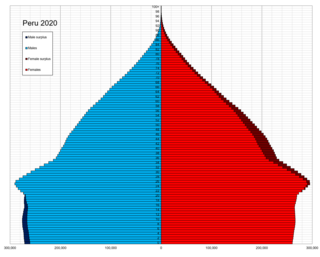
This is a demography of the population of Peru including population density, ethnicity, education level, the health of the populace, economic status, religious affiliations and other aspects of the population.
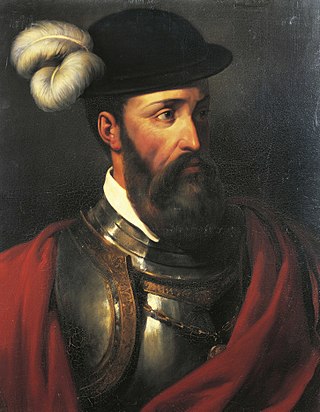
Francisco Pizarro, Marquess of the Atabillos was a Spanish conquistador, best known for his expeditions that led to the Spanish conquest of the Inca Empire.

Inca Kola is a soft drink that was created in Peru in 1935 by British immigrant Joseph Robinson Lindley. The soda has a sweet, fruity flavor that somewhat resembles its main ingredient, lemon verbena. Americans compare its flavor to bubblegum or cream soda, and it is sometimes categorized as a champagne cola.

Atahualpa, also Atawallpa (Quechua), Atabalica, Atahuallpa, Atabalipa, was the last effective Inca emperor before his capture and execution during the Spanish conquest.

Piura is a city in northwestern Peru located north of the Sechura Desert on the Piura River. It is the capital of the Piura Region and the Piura Province. Its population was 484,475 as of 2017 and is the 7th most populous city in Peru. The city is located in the central eastern part of the Piura Region, 981 kilometers from the countrys capital, Lima and is near to the border with Ecuador.

La Libertad is a department and region in northwestern Peru. Formerly it was known as the Department of La Libertad. It is bordered by the Lambayeque, Cajamarca and Amazonas regions on the north, the San Martín Region on the east, the Ancash and Huánuco regions on the south and the Pacific Ocean on the west. Its capital is Trujillo, which is the nation's third biggest city. The region's main port is Salaverry, one of Peru's largest ports. The name of the region is Spanish for "freedom" or "liberty"; it was named in honor of the Intendancy of Trujillo's proclaiming independence from Spain in 1820 and fighting for that. It is the ninth smallest department in Peru, but it is also its second-most populous department after Piura and its second-most densely populated department after Lambayeque.
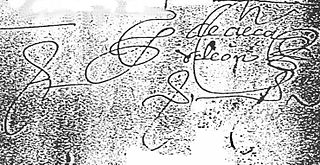
Pedro Cieza de León was a Spanish conquistador and chronicler of Peru and Popayán. He is known primarily for his extensive work, Crónicas del Perú, which has been a source of knowledge for centuries for different disciplines such as history, philology, geography, biology, anthropology, botany and zoology. He wrote this book in four parts, but only the first was published during his lifetime; the remaining sections were not published until the 19th and 20th centuries.
The term Peruvian literature not only refers to literature produced in the independent Republic of Peru, but also to literature produced in the Viceroyalty of Peru during the country's colonial period, and to oral artistic forms created by diverse ethnic groups that existed in the area during the prehispanic period, such as the Quechua, the Aymara and the Chanka South American native groups.
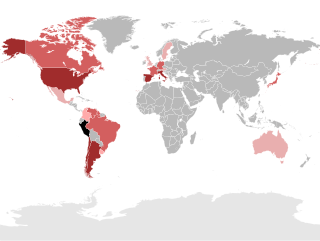
Peruvians are the citizens of Peru. What is now Peru has been inhabited for several millennia by cultures such as the Caral before the Spanish conquest in the 16th century. Peruvian population decreased from an estimated 5–9 million in the 1520s to around 600,000 in 1620 mainly because of infectious diseases carried by the Spanish. Spaniards and Africans arrived in large numbers in 1532 under colonial rule, mixing widely with each other and with Native Peruvians. During the Republic, there has been a gradual immigration of European people. Chinese and Japanese arrived in large numbers at the end of the 19th century.

Paramonga was an important city constructed at the border of the former Kingdom of Chimor in Peru during the late Intermediate Period, whose capital was the metropolis of Chan Chan.
British Peruvians are Peruvians of British descent. The phrase may refer to someone born in Peru of British descent. Among European Peruvians, the British were the fifth largest group of immigrants to settle in the country after the Spanish, Germans, Italians, the Swiss or/and the French.

A Spanish Peruvian is a Peruvian citizen of Spanish descent. Among European Peruvians, the Spanish are the largest group of immigrants to settle in the country.

Pedro de Candia was a Greek explorer and cartographer at the service of the Kingdom of Spain, an officer of the Royal Spanish Navy that under the Spanish Crown became a Conquistador, Grandee of Spain, Commander of the Royal Spanish Fleet of the Southern Sea, Colonial Ordinance of Cusco, and then Mayor of Lima between 1534 and 1535. Specialized in the use of firearms and artillery, he was one of the earliest explorers of Panama and the Pacific coastline of Colombia, and finally participated in the conquest of Peru. He was killed in the Battle of Chupas, (Peru), on 16 September 1542, by Diego de Almagro II.
José Antonio del Busto Duthurburu was a Peruvian historian.
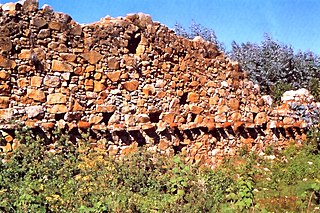
Viracochapampa, Huiracochapampa, or Wiracochapampa is an archaeological site with the remains of a building complex of ancient Peru of pre-Inca times. It was one of the administrative centers of the Wari culture. Viracochapampa is located about 3.5 km north of Huamachuco in the region of La Libertad at an elevation of 3,070 metres (10,072 ft).

The Foundation of Trujillo is an example of Spanish colonial expansion that took place in the area known today as the Valley of Moche in northern Peru. The exact date of Trujillo's foundation is still in dispute; according to historian Napoleón Cieza Burga it is November 1534.

Arca Continental Lindley S.A. is a Peruvian company involved in the manufacturing, distribution and marketing of nonalcoholic beverages and the official bottler and distributor of all Coca-Cola products in Peru. The Lindley Corporation is best known for its creation and marketing of Inca Kola, the number one selling soft drink in Peru. The Lindley Corporation, located in the historic District of Lima, Peru, is also a major promoter of plastic recycling programs in Peru. Its president is Johnny Lindley Suarez.

The Second part of the royal commentary better known as the General history of Peru, is a historical literary work written by Inca Garcilaso de la Vega, the first Peruvian and Spanish mestizo of intellectual renown. It was published in 1617, in Córdoba, Spain, a year after the death of its author, and was dedicated to the Virgin Mary. It is the continuation of the Comentarios reales de los incas, and was published in a crucial period of the history of Peru, which began with the arrival of the Spanish and ended with the execution of the final Inca of Vilcabamba, Túpac Amaru I, in 1572. Aside from the historical motive of the text, the author sought through this second part of his work to praise his Spanish heritage, as he had done with his indigenous heritage in the first part of his work.
















